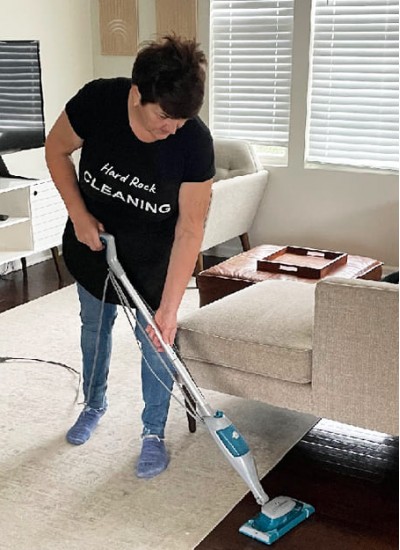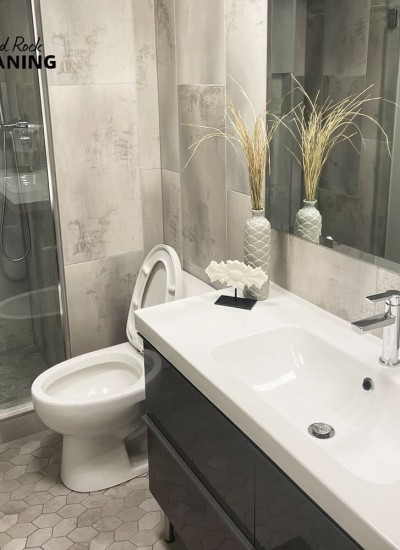
How to Properly Organize the Cleaning of Your House
Maintaining order in a private house is much more challenging than in a small apartment. Regardless of the purpose of the house – whether it's for permanent residence or as a vacation spot, occasional deep cleaning is necessary. Moreover, cleaning a house after renovation requires a considerable amount of effort: one has to allocate a specific amount of time, prepare auxiliary materials and cleaning supplies, create an action plan, and enlist help because tackling such a task alone is practically impossible. Additionally, the large area of the space adds complexity, as without an organized approach, this process can stretch over several days.
Creating a Cleaning Plan
There is no perfect template for cleaning planning because situations vary, and each homemaker has their own cleaning helpers, such as a robot vacuum, window cleaner, or steam mop. Nevertheless, it's advisable to follow a certain scheme and try to clean from top to bottom. If your house has randomly scattered items, start by organizing them in their designated places. Then proceed to clean surfaces on the furthest and highest shelves and cabinets. After that, move downward: clean windows, mirrors, walls, and doors. Finally, deal with dirt and dust on tables, dressers, and floors.
Preparation for Cleaning
Once the cleaning plan is outlined, choose a specific day and stock up on the necessary tools. If you'll involve family members in cleaning, agree and distribute responsibilities beforehand. Check if all the auxiliary materials are available in the house: gloves, cloths, sponges, various cleaning agents. If anything is missing, purchase it.
Types of Home Cleaning
- Maintenance Cleaning: Maintenance cleaning of a house is not done too often, approximately once every 2 weeks or even once a month, depending on the degree of surface dirt and the size of the cottage. The goal of such cleaning is to maintain order rather than achieve crystal-clear cleanliness. The process includes both wet and dry cleaning: dust is wiped from all surfaces, interior items are cleaned from dirt, and the floor is either mopped or vacuumed, while clothes and belongings are put in their places.
- Deep Cleaning: Deep cleaning of the house is done in all rooms, including the bathroom, toilet, and even the pantry. The goal is the same as with maintenance cleaning – to clear surfaces of dust and dirt, wipe away dust, and eliminate chaos among belongings and clothes. The main difference from other types of cleaning is that regular cleaning results in actual cleanliness. Dust and dirt are removed everywhere, even on the farthest shelves, not just visible areas.
- Post Construction Cleaning: Cleaning the house after renovation involves cleaning the living space from dirt and debris. Construction debris, dust, shavings, protective materials, traces, and stains from various mixtures and solutions all need to be cleaned to make the cottage fully operational. Regular cleaning of the house after renovation can take 2-3 days (especially with a large space) if done independently.
- Moving Cleaning: Cleaning the house after moving is largely similar to deep cleaning. After moving into any house, you can discover dirt on furniture and other surfaces, shoe marks on the floor, stains on the ceiling, walls, and disorder in the kitchen and bathroom. Typically, a powerful arsenal of cleaning and washing agents and several pairs of hands are required to clean, vacuum, and rearrange everything.
Cleaning Tips for the Home:
- Always adhere to the main principle when cleaning the house – perform all tasks from top to bottom. Start cleaning from the ceiling, cornices, high cabinets, and distant shelves, gradually moving downward. Lastly, tidy up the floor.
- Use natural cleaning products. If you need to eliminate mold in the room and other stubborn dirt, choose products with a natural and environmentally friendly composition, without a strong odor. Aggressive mixtures can cause allergies and even trigger asthma attacks.
- If time for a full cleaning is lacking, prioritize areas with high traffic. At least once a week, organize the places where your family members most frequently spend time. Typically, "clutter zones" form on the hallway table, in the kitchen, on the dresser in the bedroom, or in the living room. The dirtiest places in the house are usually sinks, the bathtub, toilet, and the doormat.
- Regularly perform maintenance cleaning. This type of cottage cleaning doesn't involve anything complex. Dedicate 10-15 minutes a day to elementary actions: dusting, disposing of garbage, washing the sink, changing towels, and loading laundry. This will significantly reduce the frequency of deep cleaning.
- Utilize modern storage systems and solutions. When all items are organized and in their places, it helps maintain order with minimal effort. Each item in the house should have its designated spot. For maximum convenience, try to store items in the room where they are most frequently used.
- Don't hesitate to seek the help of professional cleaning companies near you. Sometimes it's better to hire a good cleaning company than to clean a country house alone. Use your resources wisely: value your time, energy, and preserve your health.
- During deep cleaning of the home, maximize the free space. During a deep cleaning, after renovation, or immediately after moving, it's important to clear the space of belongings, furniture, and appliances to prevent damage, spoilage, or interference.
Cleaning the house may seem daunting due to its volume, but in reality, it's not as scary as it seems. On one hand, it's a meticulous and time-consuming task. Daily house cleaning may seem unrealistic for many. However, with proper organization, this process can help avoid chaos, scattered belongings, and the overwhelming feeling of disorder. With a smart approach and good organization, cleaning your home will be more efficient and require less time.





